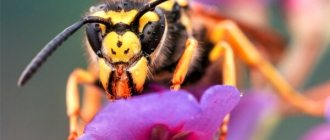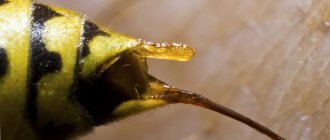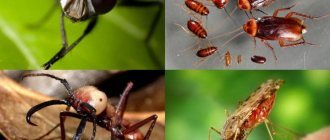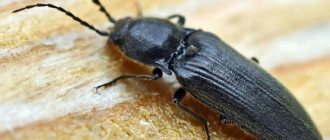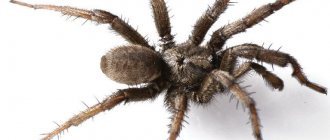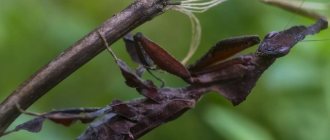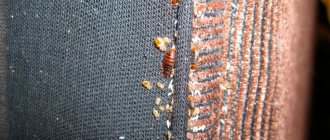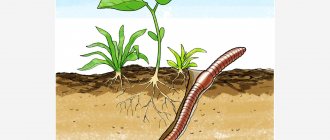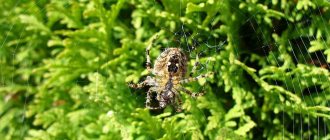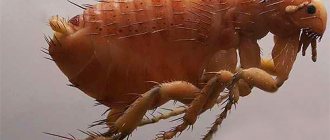How many legs do insects have?
Adults of the insect class have three pairs of limbs. The thoracic region of their body consists of three segments, each of which carries one pair of legs. They are attached to the underside in the thoracic region.
What kind of limbs do insects have, how are they structured, and what functions do they perform...more on that below.
Water bugs
All aquatic insects are of interest from the point of view of the structure of their limbs. They demonstrate a completely different, but also unique adaptation. Science has asked how they can float on the surface of the water and not drown? It turned out that the water beetle has a kind of oar on its hind legs. Special hairs have grown on them, with which the insect makes rowing movements. This is how it floats on water. Some species are equipped with thickened and widened segments (this is the last section of the leg). Thanks to this structure, they can float perfectly on the water. Although these insects prefer to live in calm waters. It is difficult for them to fight against strong currents. The little creature does not have enough strength for this.
How are the limbs of insects arranged?
The class insects belongs to the phylum arthropods. This name confirms the structural features of the legs of insects: they consist of several segments.
The main segment attached to the corresponding segment of the chest is called the coxa. The basin has a strictly defined shape. It differs among different types of insects. In some representatives the coxa looks like a ball or transverse cylinder, in others it looks like a cone or a wide leaf. The mobility of the limb depends on the shape of the coxa. The smallest segment is called the trochanter. Sometimes it is double. The trochanter is motionlessly articulated with the femur.
The longest component of the limb is the femur. It is longer than all parts of the leg and looks like a long cylindrical stick.
The next section is called the lower leg. It is comparable in size to the thigh, and together with it makes up the longest part of the insect’s limb.
The thigh and lower leg are connected using the knee. The leg ends with a paw. It consists of several flaxes movably connected to each other, their number is 2 - 5. The foot is armed with small claws. Usually there are two, and extremely rarely one.
Even dark insects that fly or swim need legs.
Why gears?
While studying the number of legs in insects of different classes, their structure and functions, scientists came across an unexpected fact. Some of them have an interesting mechanism in their structure - a gear. Schematically, it can be represented in the form of two jagged wheels that are interlocked. Through the protrusions they interact and synchronize movement. Why is this? It turns out that this mechanism allows insects to jump at tremendous speed. This miracle lives in America, it is called Jesus. It is not capable of flight, but it makes amazing jumps. Even a speeding car will not be able to overtake it during takeoff. It is interesting that these legs are located not on the sides, but at the bottom of the insect. This makes his life problematic. If you do not push off synchronously, then the jump will not work. The insect simply circles on one leg. Evolution has eliminated this effect with a mechanical device whose purpose is to make the shocks synchronous. The scientists' surprise knew no bounds. This is the first recorded fact of the use of engineering in the structure of living beings.
Many people are confused about the types of invertebrates when answering the question of how many pairs of legs insects have. Spiders and centipedes of all kinds are mistakenly included among them, which is fundamentally incorrect. Later we will say a few words about them, but for now we will turn our attention to representatives of the Insect class.
Types of Insect Limbs
The most ancient are the running and walking legs of insects. The remaining types of limbs appeared in the process of long-term development, and, as a rule, are associated with various adaptations to environmental conditions.
- Running limbs
The running legs have an elongated shape. They are slender, and the tarsus, lower leg, thigh and coxa are narrow or wide. This type of limbs is present in cockroaches and ground beetles.
- walking legs
Walking legs are designed for slow movement. These are the legs of beetles - longhorned beetles, leaf beetles, crawling from leaf to leaf, leisurely gnawing leaves.
Insects need limbs to move around.
- Swimming limbs
The hind legs of insects usually become swimming, and less often the middle legs. They are covered with long hairs that form a wide rowing surface - a kind of oar. Basically, representatives with such limbs live in bodies of water and swim and dive excellently. These are swimming beetles, smooth bugs, and water lovers.
- Jumping legs
Representatives of the order Orthoptera have jumping legs. These include locusts, grasshoppers, and crickets. Their last pair of legs is very long and powerful. Many representatives of Orthoptera jump in heights of up to eighty centimeters, and if they spread their wings at the same time, the distance covered in one jump reaches about ten meters.
- Digging legs
Digging legs are characteristic of the mole cricket, dung beetle, and May beetle. Usually the first pair of legs become digging legs. The limbs of this type are powerful, flat and short.
The legs of grasshoppers give them the ability to move tens of meters in a matter of seconds.
- Collective limbs
The limbs of bees and bumblebees are called collective or basket limbs. On the hind legs of these insects there are special areas surrounded by long chitinous hairs; these are baskets. Bees move from flower to flower and get dirty in the pollen that sticks to the hairs of their bodies. With special brushes located on the legs, the bee collects flower pollen into baskets.
the adhesive dust particles form a lump called “polnoka”. The bee carries pollen into the hive and deposits it in the honeycomb. Bee bread soaked in nectar is formed; it serves as a reserve protein food for the entire bee family.
Thanks to the collecting type of legs, the bee can “save” pollen.
- Grasping legs
Grasping legs of a praying mantis. They are armed with sharp spines, which the predator uses to hold its prey.
- Suction limbs
The legs of males of some species of insects - swimming beetles and ground beetles - have expanded segments at the ends of the legs. During the breeding season, males use these devices to grasp females during mating.
Grasping legs help not only to hold prey, but also to the female during mating.
What about centipedes and spiders?
Contrary to popular belief, and even to the name, the centipede has not forty legs, but only thirty. By the way, they appear in an extremely interesting way in an invertebrate. At the beginning of its existence, it has only eight legs (almost a spider). Then the centipede begins to grow, the body lengthens, and additional limbs gradually grow. It turns out that the question of the number of legs of a centipede is closely related to its life expectancy.
And this creature treats its limbs very carelessly. As soon as it senses a threat, for example, a paw is stuck to the web, without thinking twice, they simply get rid of it. We can say that this is a kind of defense mechanism. Very convenient, isn't it? Especially considering that the centipede is capable of regenerating limbs.
Spider... Strange as it may sound, this representative of the animal world is not an insect. It has eight legs, not six, like insects, and the body consists of only two parts (the cephalothorax and the abdomen). In most cases, all spiders are predators, while insects mostly feed on vegetation.
The structure of an insect and its legs
Ants belong to the category of insects of the superfamily Antidae and the order Hymenoptera. These social insects are divided into 3 castes:
- females;
- males;
- working individuals.
Females and males differ in structure, they have wings, while workers do not have wings. The very first individuals began their existence back in the days of dinosaurs. Ants then had a primitive structure. Millions of years have passed since then, and today two species of ants have survived. Despite changes in structure, the insect has only 6 legs. These creatures differ from their other distant relatives in the number of paws:
- spiders;
- flares;
- crustaceans.
How many legs do ants have? This question is easy to answer. You can easily count the number of legs. The limbs are clearly visible and distinguishable when the individual is already an adult. Each pair of legs is located on a separate part of the chest. Ant legs are extremely strong, consisting of three joints. The upper part of the leg is called the thigh, the middle part is the shin, and the lowest part is the tarsus. The middle and upper parts are connected by a spur. The limbs have different sizes, as well as proportions, it all depends on the type of insect. In general, they have the same paw placement. The front paws are located in front of the chest. These paws have a special device in the form of a small brush. With their help, the insect takes care of its other legs and antennae.
Dragonfly and others
Another amazing representative of the insect world. This flyer uses her limbs in a special way. Her legs are equipped with stiff bristles. When a dragonfly flies, it arranges its limbs in such a way that it forms a kind of net. With this device she gets her food!
Small insects, caught in the interweaving of bristles, immediately become prey and are eaten by the dragonfly. The variety of ways and methods of using insect legs is truly enormous. They are not only designed for walking, like mammals. They are used to row, and cut, and grab. Insects also use their legs to clean their antennae. For this purpose, the limbs are equipped with special grooves. But some species of butterflies use their front legs exclusively for rubbing their eyes. These limbs are atrophied and equipped with special hairs.
